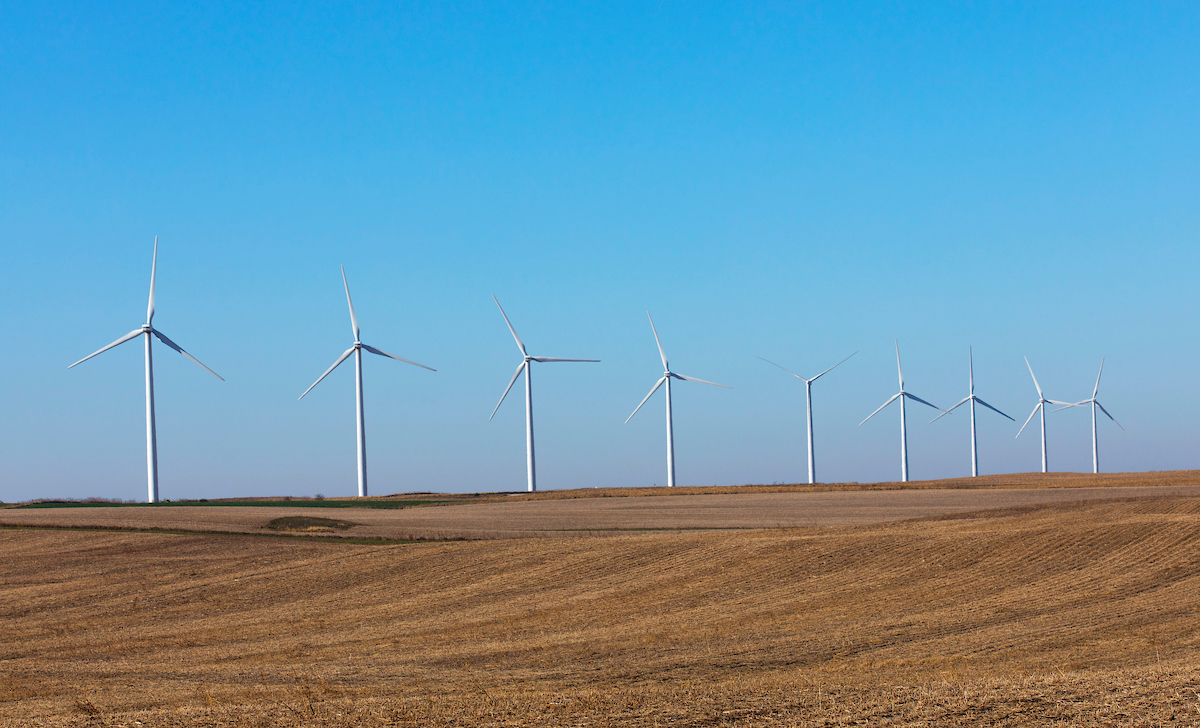Iowa, after all, now generates more than 40% of its electricity from wind.
So, what would happen, he wondered, when even more wind capacity is added and then a storm blows through, such as the unprecedented derecho on Aug. 10? Or there’s a cyberattack on the grid? Or there’s a physical attack that takes down transmission towers?
The lights go black. And thousands have lost electricity.
How does a wind-dominant electric grid recover from a blackout? How do you “black start” a wind power plant?
It’s a major challenge because wind power plants aren’t designed to meet a typical, step-by-step blackout recovery, said Villegas Pico, an Iowa State assistant professor of electrical and computer engineering. A wind turbine isn’t like a gas turbine at a power plant. You don’t fuel it up, flip a switch and watch it meet system demand with its steady fuel supply.
“You have to account for the limitations introduced by the variability of the wind energy resource in time and space,” Villegas Pico said. “And there’s no storage of wind energy to plan in advance how to meet demand. You have to use the available wind resources, and that makes black start of wind-dominant grids difficult to plan. You need to make restoration plans that can adapt and change on the fly.”
A new, three-year, $729,349 grant from the U.S. Department of Energy will help Villegas Pico and his research group figure out how to orchestrate the restoration of wind-dominant electric grids after a blackout. Bill Gallus, an Iowa State professor of geological and atmospheric sciences and a storm researcher, will collaborate on the project. MidAmerican Energy Co. and the National Renewable Energy Laboratory’s National Wind Technology Center in Colorado will also support the project.
A potential barrier
Villegas Pico says the blackout problem could be a long-term obstacle to building more wind-energy capacity, but he thinks extensive research can find several technical solutions.
First, today’s wind turbines aren’t designed for a black start. So Villegas Pico proposes innovate solutions, including:
- Regulators to actively control the amount of power harvested by wind turbines, giving utilities more ability to balance power generation and demand.
- Regulators that allow turbines’ power converters to withstand transient surges from transformers and motors during black starts.
- Novel automatic synchronization methods that keep turbines operating together, even without the aid of conventional power generators such as gas turbines.
Second, it’s impossible to script a black start for a wind-dominant grid because the wind resources are variable. Different wind conditions require different plans. Villegas Pico’s idea is to combine modern artificial intelligence tools with new forecasting models to create restoration plans on the fly that could be orchestrated by a computer.
The project will also examine the use of batteries to store a minimum amount of energy for the black-start process of wind energy systems. And, the project will develop the technical and scientific knowledge to teach students about the restoration process for wind-dominant electric grids.
Villegas Pico says the project could have national and statewide impacts.
The U.S. Department of Energy announced in July 2019 it would develop a North American Energy Resilience Model, in part, because of emerging threats to the power grid from extreme storms as well as cyber and physical attacks.
And, “The project is central to the state of Iowa because it is becoming wind dominant,” Villegas Pico wrote. “Thus, it is reasonable to anticipate that wind power plants must provide black-start services in the area.”
A case in point
The Aug. 10 derecho that blew across Iowa and the Midwest – with wind gusts estimated up to 140 mph and damages estimated at $7.5 billion – cut power to about half a million Iowans.
Villegas Pico has yet to research how utilities were – or weren’t – able to use wind energy to help restore power grids after the derecho. But he will. He expects that will reveal more challenges for black starting electric grids dominated by wind energy.
The new solutions to all these wind-energy challenges that Villegas Pico and his research team are developing “could expedite the recovery from blackouts,” he said. And that could make a difference in your neighborhood after the next big storm.
– 30 –



